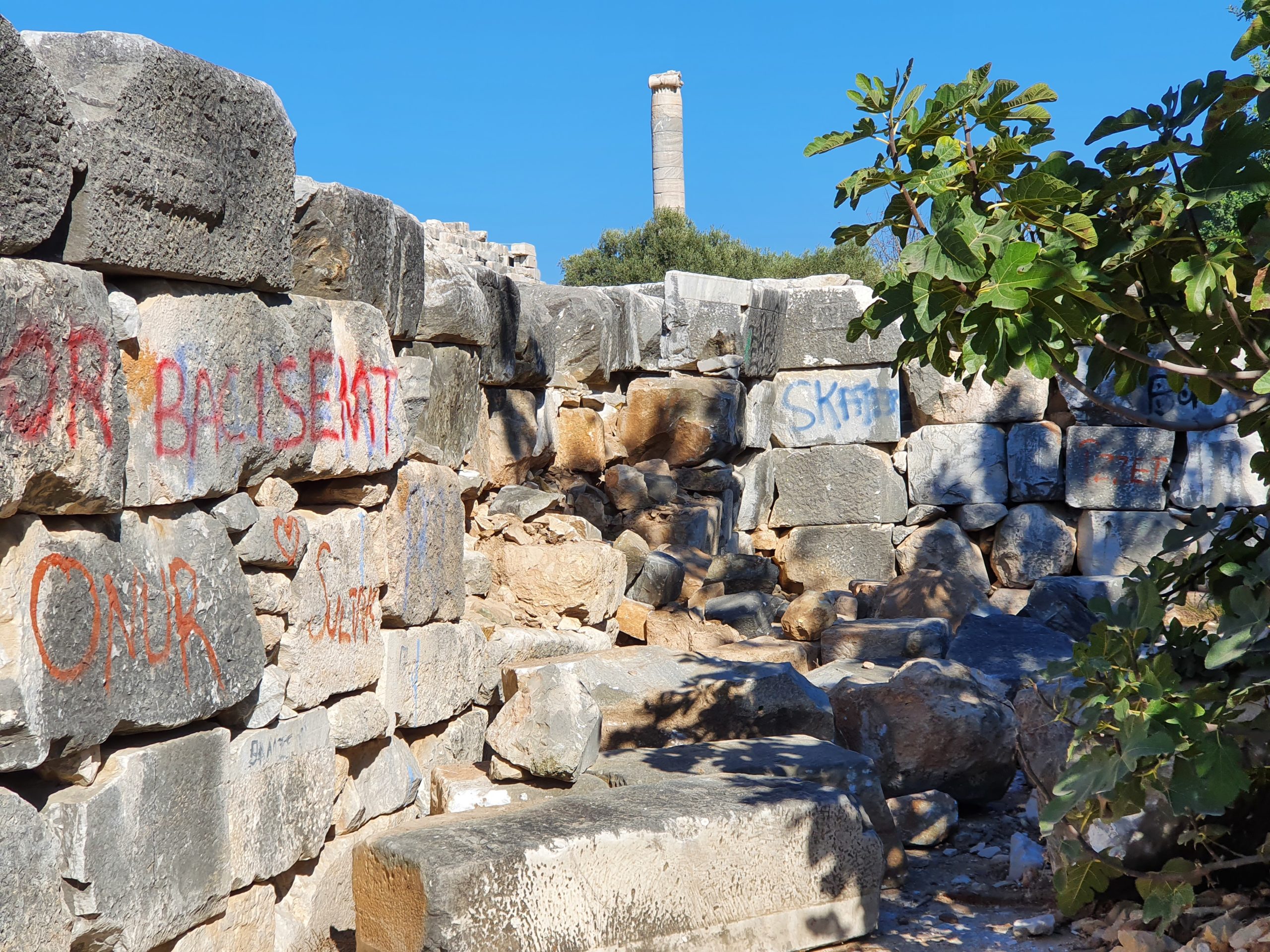An ever-vigilant friend messaged me last week to say that after meeting with some people close to the Temple of Apollo she decided to walk home taking a route around the back of the Temple’s outer perimeter wall, writes Glenn Maffia.
What she observed appalled her; sections of the fencing which top the walls had been ripped or weathered down, the ageing walls themselves (constructed in the early 1900s to deter the villagers from entering the active archaeological site) are in a sorry condition with some of the stones toppled during the last large earthquake in 2019, whilst the stones in the ‘hidden from the public’ areas have been blighted by that adolescent curse of daubing their names in spray paint.
The site, therefore, is not secured in the slightest, and the sight of the spray paint an abomination to those who happen upon all this graffiti.
A multitude of problems
Naturally, I have continued to mournfully observe and record this continued desecration of the Temple over the years and the apparent apathy shown by many. If they do care, then their concerns appear to lack any urgency.
I have personally written at regular intervals about not only these issues, but also the continued use by heavy traffic upon the road that circles the site. The sheer weight of traffic, I fear, affects the foundations of the Temple in an adverse manner.

This traffic was also directly responsible for the flooding of the southeast section of the precinct from 2016 until 2020 when a water pipe was fractured beneath the road.
If you so desire, we can also add to this list the collapsed wall of the old Greek village hospital, later used as the ‘small finds’ house used by the archaeologists, which currently hangs precariously defying gravity. I would be dismayed, and incandescent with anger, if anyone were injured or killed if they had the misfortune of being near that building the next time we have an earth tremor.
Years of inertia
‘Voices’ ran a front page article on July 20 2019 which foreshadowed my friend’s anxieties, specifically in reference to the graffiti. The kernel of the story emanated from Regional Aydın Media, where they highlighted the concerns of residents and tourists visiting the area in direct response to the jejune daubing and the general scruffy, untidy state of this vicinity tucked away behind the Temple.

I have known people who have been reticent about walking along these back roads; such is the squalor and slightly threatening ambience that presents itself to them. For all my protestations to assure them that no threat is posed, the trepidation conjured in these visitors’ minds remains acute.
Aydın Media continued by stating that “the Temple of Apollo and its environs cannot be removed (?) due to the fact there is no study in the area due to the fact it is a first degree protected area – and the environmental pollution that causes the bad appearance of the temple cannot be removed due to lack of a strategic plan”.

Possibly I am missing something here, for this ambiguous statement makes absolutely no sense to me. Is it saying that due to its protected status the archaeologists are thus unable to study the area? Then what the hell are the archaeologists even doing here at all?
Admittedly, after a surge in new exciting finds a number of years back when first a theatre was unearthed, followed a year later by a second temple and almost simultaneously a square Hellenistic foundation (currently conjectured to be a monumental gate), the dwindling number of archaeologists appear to have been content to idle away their time with maintenance projects. All very necessary, I admit, but rather stultifying in imagination and scope.

Whilst if there is a lack of a strategic plan, then devise one for heaven’s sake, or does it require two and a half years to realise an agreed course of action to eradicate the grotesque eyesore of which so blights our magnificent temple?
Judge for yourself
I have the distinct feeling that the inertia to rectify these simple problems probably arises from closer to home. Personally, I visit the allegedly protected area of the Temple and its immediate environment for itself alone. Certainly, I expect the glorious setting to be maintained to a level befitting cultural tourism for an international market.
Take a walk around and judge for yourselves.

